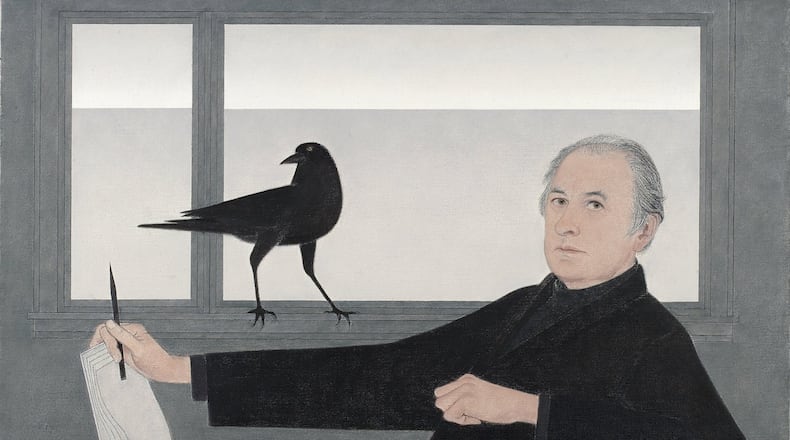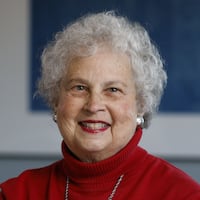>> Dayton Art Institute a BIG winner in Best of Dayton in its BIGGEST year
“For America: Paintings from the National Academy of Design” showcases 100 works by some of our nation’s most illustrious artists. Dayton is the first stop for the exhibition, which will then travel to seven other cities including Palm Beach, Fla., Sana Fe, N.M., and Sacramento, Calif.
“Being the first stop is exciting,” says Smith. “That means everybody will be seeing it here for the first time in this format. It means those planning future installations at the other museums will be looking at Dayton to see how we’re doing it. Some of them may come here to see it.”
The traveling exhibit was organized by the American Federation of Arts. Among the well-known artists whose work is included in the show are Winslow Homer, John Singer Sargent, Maxfield Parrish, William Merritt Chase, N.C. and Andrew Wyeth, Thomas Eakins, Robert Henri, Ernest Blumenschein, Isabel Bishop, Richard Estes, Wayne Thiebaud and Peter Saul.
>> HISTORY: When the community chipped in to open the Dayton Art institute
Telling the story
This exhibition of 100 paintings by 79 artists tells the story of the National Academy of Design, an organization that dates back to 1825 and has always had a simple mission: “To provide means for the training of artists and to promote and exhibit their art.”
Membership at the Academy is by invitation only. If elected, you’re required to donate one of your works to the organization. In 1839, a second requirement was added: You had to submit a portrait of yourself for the collection which could be painted “by your own hand” or by another artist. So it’s no surprise that much of the artwork you’ll see on display in this exhibit is either a “diploma work” or “diploma portrait.” In many cases the two submissions are hung side by side.
The result, says Smith, is that visitors will be seeing two centuries of naturalism and realism in American art. In addition to the names we may recognize, Smith says, a lot of these artists were big deals in their own time, but may have stepped out of our consciousness. “But they’re great artists, great enough to have been nominated and accepted to the Academy,” he says.
>> What’s in store at the Dayton Art Institute for centennial year
Meet the curators
Curators for the exhibition are Diana Thompson, director of Collections and Curatorial Affairs, National Academy of Design and Jeremiah William McCarthy, associate curator, American Federation of Art. The two came to Dayton earlier this week for the Jefferson Patterson Society’s sneak preview event.
Here’s what they have to say about the exhibit and how it came to be:
Q. How did you select the works for this exhibition?
Thompson: The collection tells a story of American art that is written by its makers. Although the Academy's fine art collection contains everything from works on paper and sculpture to new media and architectural models, our decision to focus exclusively on paintings stems from the early concerns of the Academy's founders: 16 self-declared painters, one sculptor, one architect, and five engravers.
McCarthy: We decided in our first conversation that if we were going to put together a traveling exhibition, it needed to say something about the core of the Academy's collection, and that is the joint presentation of an artist's portrait with her or his diploma work. This really is a collection like no other in the nation.
Alongside the “official” pairs — the artist’s work and portrait — we wanted to show works from different time periods where you see artists exploring the same ideas or visual themes in their work. For example, the diploma portraits of Eliza Greatorex and Will Barnet were painted 112 years apart, but they are remarkably similar; they each face the viewer with a casual glance over the shoulder, stylus and sketchbook in hand.
Q. There are 100 paintings in the exhibition – how did you select those?
Thompson: There are over 2,200 paintings in the NAD's collection spanning nearly 200 years. Of these 2,200, over 1,000 are portraits and self-portraits. We wanted to show the connections and affinities that exist across generations of Academy membership, as well as the institution's undaunted commitment to realism, particularly the figurative tradition.
Q. What do you hope visitors in Dayton (as well as other cities) will take away from this exhibition?
Thompson: This art speaks to the country's self-directed spirit. It is representative of nearly every region of the country — landscapes from Monhegan Island, Maine to the Los Angeles skyline, and personal experiences as different as Academy founder Samuel F. B. Morse, the inventor of the Morse code and accomplished painter, and visual artist Jaune Quick-to-See Smith, whose practice addresses contemporary concerns while harking back to the storied history of this nation.
McCarthy: I hope they see a bit of themselves in the exhibition's portraits, whether that's the steely confidence of Cecilia Beaux, the searching look of Hughie Lee-Smith, or the wonderfully grotesque humor of Peter Saul.
How it’s organized
Most of the exhibit is organized chronologically. As you walk through the galleries, you’ll be walking through five epochs of American art history.
- "Founding an American School" explores the origins of the Academy and the rise of the Hudson River School and American genre painting.
- "A New Internationalism" reflects the impact of contemporary European art and art education on the Academy's teaching. One example is William John Whittemore's portrait of Charles Courtney Curran, which shows an American artist in Paris sketching from a classical statue at the Louvre.
- "Painting America" explores a geographically diverse collection of landscapes and scenes of American life.
- "Postwar Realisms" outlines how realism remained an alternative to American abstraction. Mid 20th century, the Academy broadened its membership to encompass a diversity of American experiences including artists of color. The exhibition includes Charles White's portrayal of his great-aunt Hasty Baines, born into slavery in 1857.
- The exhibition's final section, "For America," presents paintings from living National Academy members. There are now 460 member artists.
“This is a big ‘wow’ kind of show with plenty to learn and plenty to see,” concludes Smith. “It’s one of the most significant painting shows the Dayton Art Institute has done in a long time. Years down the road, people will still be talking about it.”
WANT TO GO?
What: "For America: Paintings from the National Academy of Design"
Where: Dayton Art Institute, 456 Belmonte Park N., Dayton
When: Feb. 23-June 2. Museum hours are 11.a.m. to 5 p.m. Wednesday through Saturday and noon to 5 p.m. Sunday. Extended hours until 8 p.m. on Thursday.
Admission: Adults: $14; Seniors (60+), Students (18+ w/ID), Active Military, Groups (10 or more): $11; Youth (ages 7-17): $6. Children (6 & under): Free
RELATED PROGRAMMING
- Trivia Night at 5:30 p.m. Friday, March 1. Hosted by Dana Sintell of the Rubi Girls. $10 members; $20 non-members
- Auditorium Talk by chief curator Jerry Smith, 6 p.m. Thursday, April 25.
About the Author







